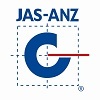Forklift Engine Types Explained: Electric and Internal Combustion

Powered by lead-acid batteries, several types of forklifts are electric: cushion tire forklifts, scissor lifts, order pickers, stackers, reach trucks and pallet jacks. Electric forklifts are primarily used indoors on flat, even surfaces.
The initial cost of an electric forklift tends to be higher than most IC fork lifts, but its annual fuel and maintenance cost is less expensive over time. Electric lift truck batteries last 6 consecutive hours or throughout an 8-hour shift with 2-3 breaks. The charge of the battery determines the strength of the lift: a fully charged forklift operates at its fullest capacity while a low charge slows its performance. Warehouses and distribution centers that use an electric for more than 7 consecutive hours keep an extra charged battery on hand. While electrics are easier to maintain than ICs, they are not recommended for continuous use of transporting loads greater than 15,000 lbs. Batteries prevent the emission of harmful fumes and are recommended for facilities in food-processing and healthcare sectors.
Internal combustion forklifts are powered by fossil fuels such as gas, propane and directflttraining.co.uk diesel. There are several types of IC fork lifts: pneumatic tire forklifts, rough terrains, scissor lifts, telehandlers, and boom lifts. IC forklifts are primarily used for outdoor applications.
An internal combustion forklift’s fuel powers the lift longer than an electric (one LP tank = 8 consecutive hours) and can be refueled in less than 10 minutes. IC forklifts are more powerful than electric forklifts, but their emission of harmful fumes (e.g. carbon monoxide) is not ideal for indoor applications. However, LP forklifts can be used indoors with proper ventilation and large aisle dimensions. IC forklifts have a better performance rate than electric forklifts for high capacity loads over 20,000 lbs. While the initial cost of internal combustion forklifts is lower than electric, these forklifts require more routine maintenance and higher fuel prices.
With skyrocketing gas prices and the “Go Green” movement, forklift brands like Toyota, Mitsubishi, Linde and Yale are developing fuel alternatives in an effort to manufacture an “eco-friendly forklift” reduce the carbon footprint of the industrial sector. The development of natural gas and hydrogen fuel cells has been their main focus for the last three years.
In 2010, BMW Manufacturing Company first announced it was working with forklift brand manufacturer Linde to develop of hydrogen forklifts and hydrogen refueling stations to operate their forklift fleet. After just two years, the BMW Sports Vehicle plant in Spartanburg, South Carolina now employs over 100 hydrogen forklifts.
Popular grocery stores Whole Foods, Walmart, and Wegman’s also reported their use of hydrogen cell forklifts. Since 2010 was a big year for hydrogen forklifts, why aren’t these fork lifts being distributed into local forklift dealerships to be sold to small-medium size companies? Are eco-friendly forklifts too expensive for the average Joe? While these brand manufacturers continue to experiment with hydrogen fuel cells, other brands are thinking on a smaller scale. Hyster, one of the most popular manufacturing brands, is restructuring the design of their current models to reuse energy and reduce fume emissions.
Both internal combustion and electric forklifts are vital components in warehouses, construction sites and distribution centers. To determine which engine type best suits your facility, it is recommended to compare price quotes and services of 3-4 forklift dealerships.



No comments